In our interview with Oakland-based painter and zine-maker Jeffrey Cheung, he discusses the significance of social anxiety and how he rebels against mainstream idealization of the white gay male body.
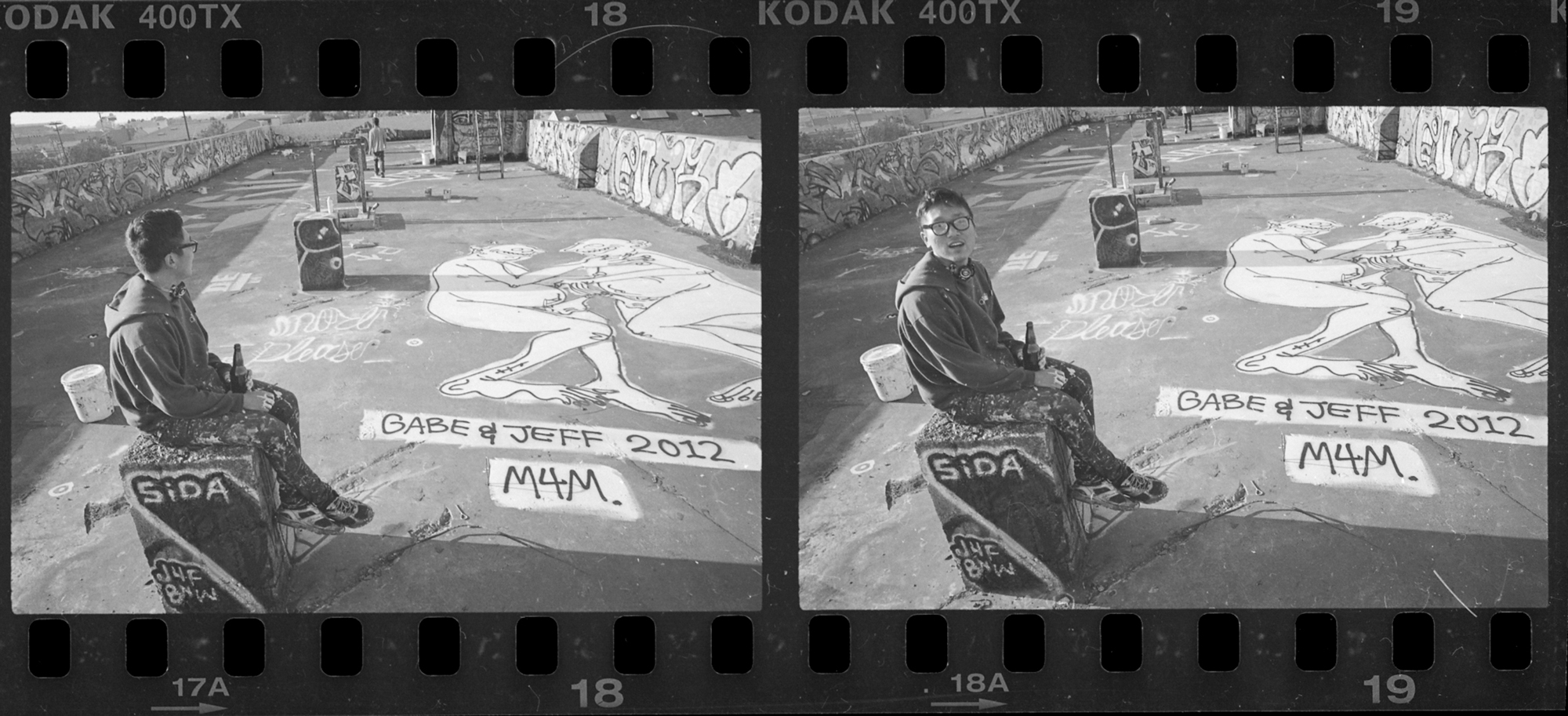
“I think being Asian American has a lot to do with my feelings of being an outsider. When I was younger a lot of the images that I saw from gay mainstream media idealized white men and white bodies and I remember feeling unattractive at an early age.”

What was your relationship with visual art when you were younger?
I have been interested in visual art since I was young but not more than any other kid — just drawing cartoons and stuff like that. In High School I took art classes and never did very well, but it was always something that I enjoyed doing. I think I started really getting into it during my last year of high school when I started going to drop in figure drawing classes with a few of my friends.
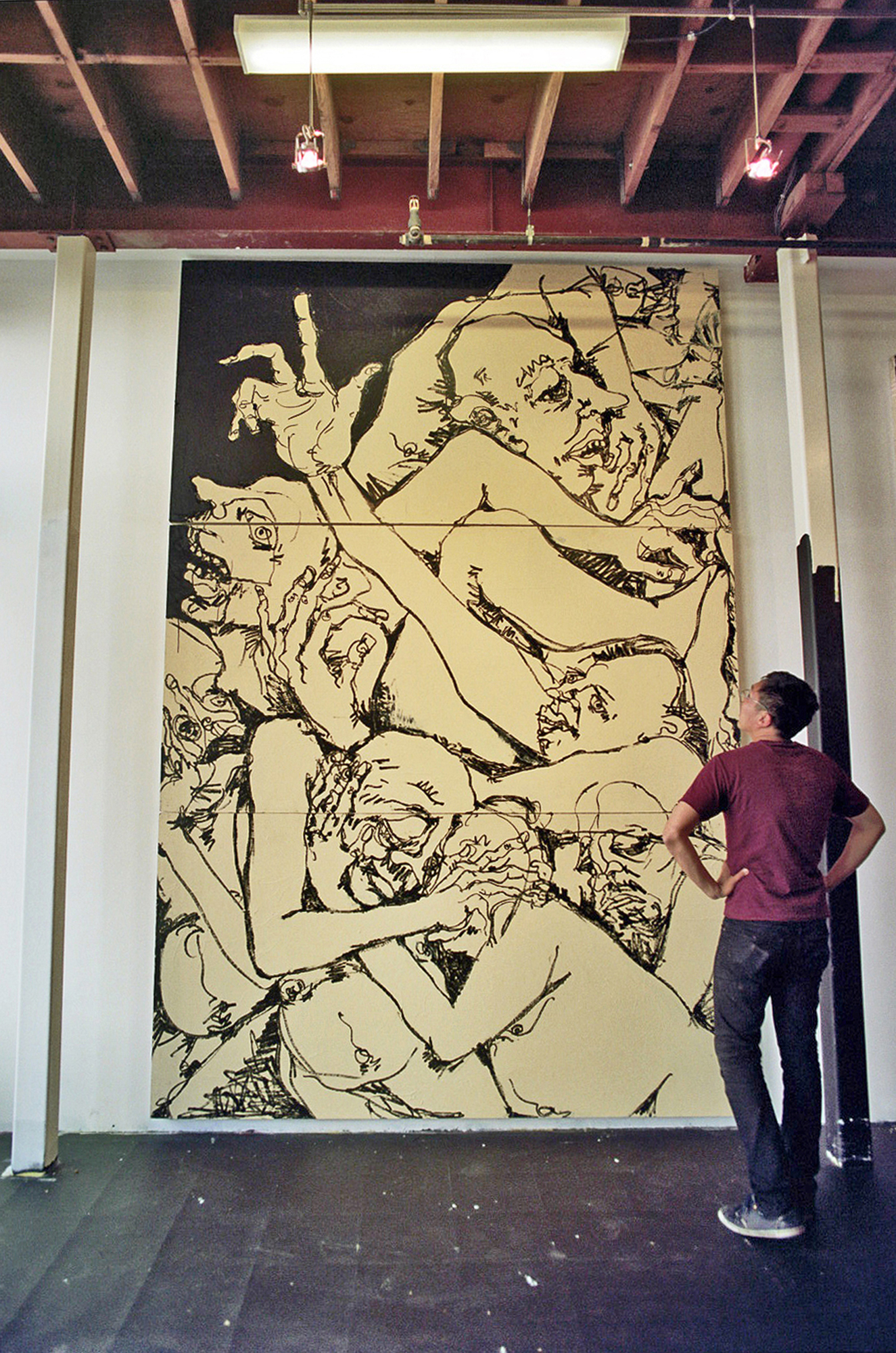
That’s funny, I also took figure drawing classes in High School. I remember being surprised at how lush and “unidealized” the nude models were. One was a pregnant woman. Another was an old man with deep folds of skin that sagged from his joints. Was that kind of also your experience? What were the models like?
Yes I had a similar experience! We often had older and bigger models with lots of wrinkles and folds in their body. We had a variety of body types as well, but I am very glad that we had those kinds of models looking back. I think I enjoyed drawing them the most.

What made you more drawn to them, and do you think that influenced the development towards your current work?
They just seemed more interesting to me than the younger, more fit models at the time. I am not sure why. I just liked the way they looked. I think having those types of models really did have an impact on me now that I think about it. I would draw someone who was young and fit, and they would often come out looking much older and heavier than they actually were somehow.
I find that really fascinating — how you can start out to draw something, but your hand will produce something else. What’s your creative process like? Do you have a general concept of what your work will be, or does it plan itself out on the page?
Sometimes I will have a rough idea of what I want the drawing or painting to be, but a lot of the times it will sort of come together on its own. Usually I will start out with one thing, and then will keep adding until I feel it reaches a point of balance. I don’t usually make sketches and will often start directly on the canvas or paper, but recently have been trying to plan things out a bit more. I think it helps sometimes to plan, but also think a little bit of spontaneity is a good thing. There have been many times when the drawing will end up way different than I intended it to be, sometimes turning out more sexual or explicit than expected.
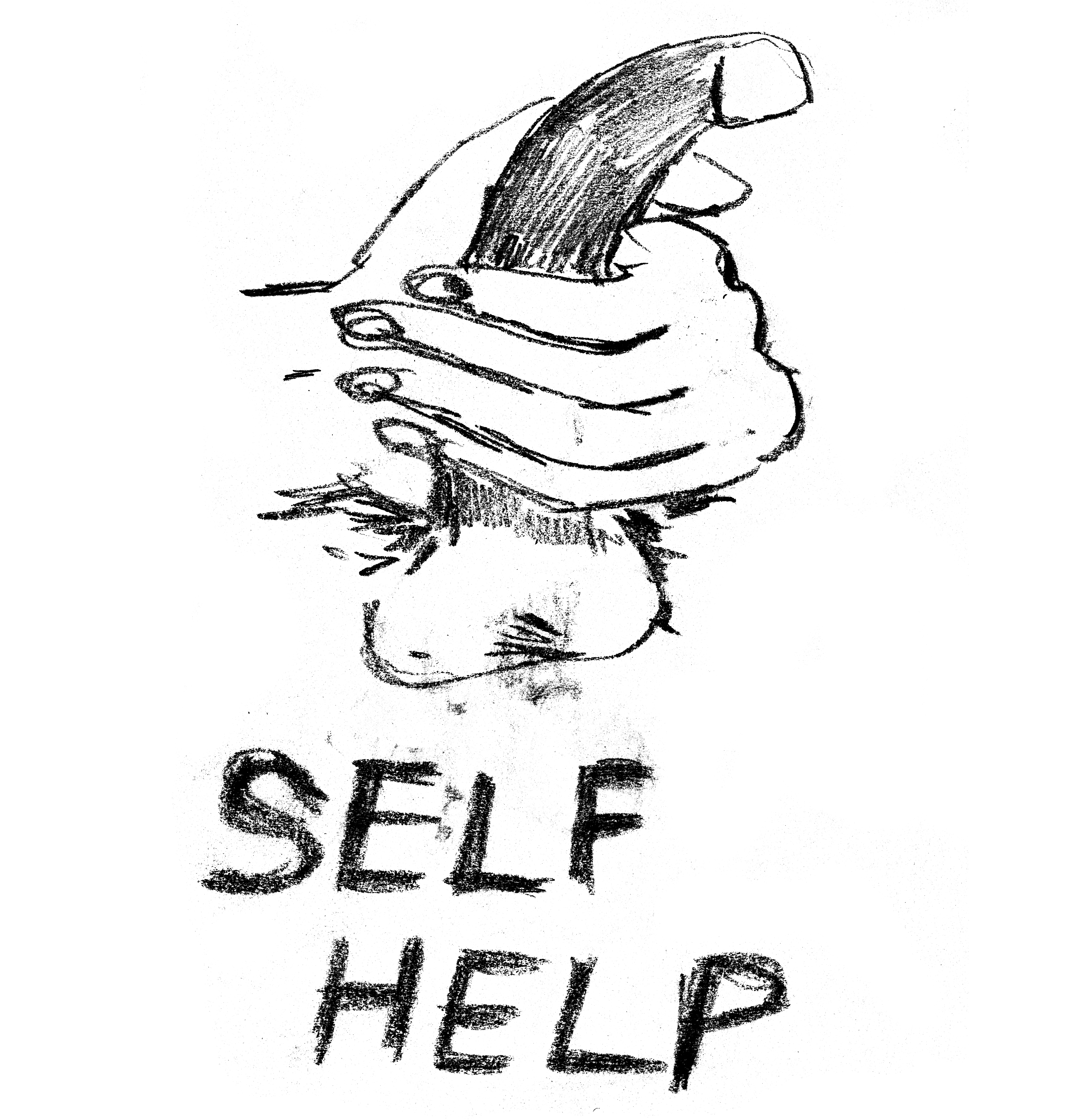
When did you start exploring sexual imagery in your work, and how did you come into it?
I first started exploring the idea when I was doing a project on gender identity and re-examining gender norms at UCSC, but feel like the concept really started to develop when I was in a queer printmaking class in San Francisco. I did a series of linocuts there that became the basis of my current work. Some of my work may have imagery that can be interpreted as sexual, but I feel that there is also an aspect that is more about the anxiety of human connection.
How would you describe that anxiety? And what do you think is the source of it?
I think it often comes from my own anxieties about connecting with others. I can be a very anxious person, and I think I project this feeling into my artwork somehow. Although some elements may be exaggerated, many of the scenes and characters I depict are often inspired by my own experiences or observations. Personally I feel like there definitely can be a sense of eagerness and uncertainty when connecting with another individual.
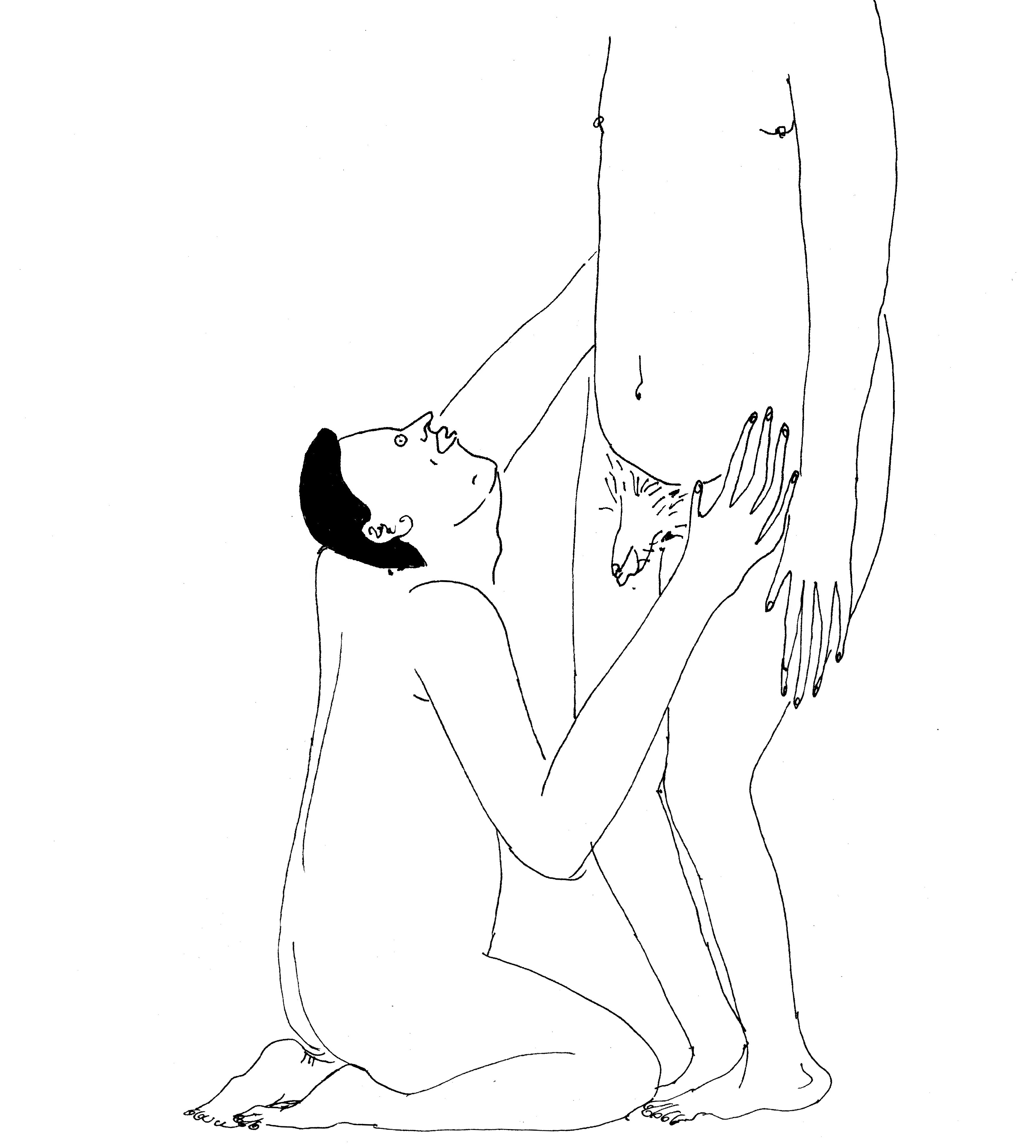
Obviously, your work isn’t autobiographical, nor is it self-representational, since you don’t physically resemble the people in your work. Though I’m interested in your emotional identification with your subjects’ anxieties. I’ve spent some time in sex clubs and dark rooms, both in the States and abroad, and I find that “eagerness and uncertainty” seems to be heightened in anonymous interactions. Actually, when I first saw your work, it reminded me of the drawings I saw across the bathroom stalls of the sex club at Berghain in Berlin. Is that culture at all an inspiration? Or rather, what are the experiences or observations that have inspired your work?
For a period of time, that culture was definitely a big source of inspiration. Sex clubs, dark spaces, bathroom stalls, saunas, and other cruisy scenarios were all common settings of some of my artwork. The sense of eagerness and uncertainty is definitely heightened in these anonymous situations, and I think I am drawn to that. Men waiting in dark hallways, wandering around catching glances of each other, everyone seems to be searching for someone else and not at all at the same time. Physically, the subjects are mostly not self representational but I feel there is still a certain level of personal connection because they are inspired by my own experiences or observations.
“To me I think that the body types that I illustrate are beautiful and attractive, and feel like it was something that I did not often see in public spaces even growing up in the bay area.”
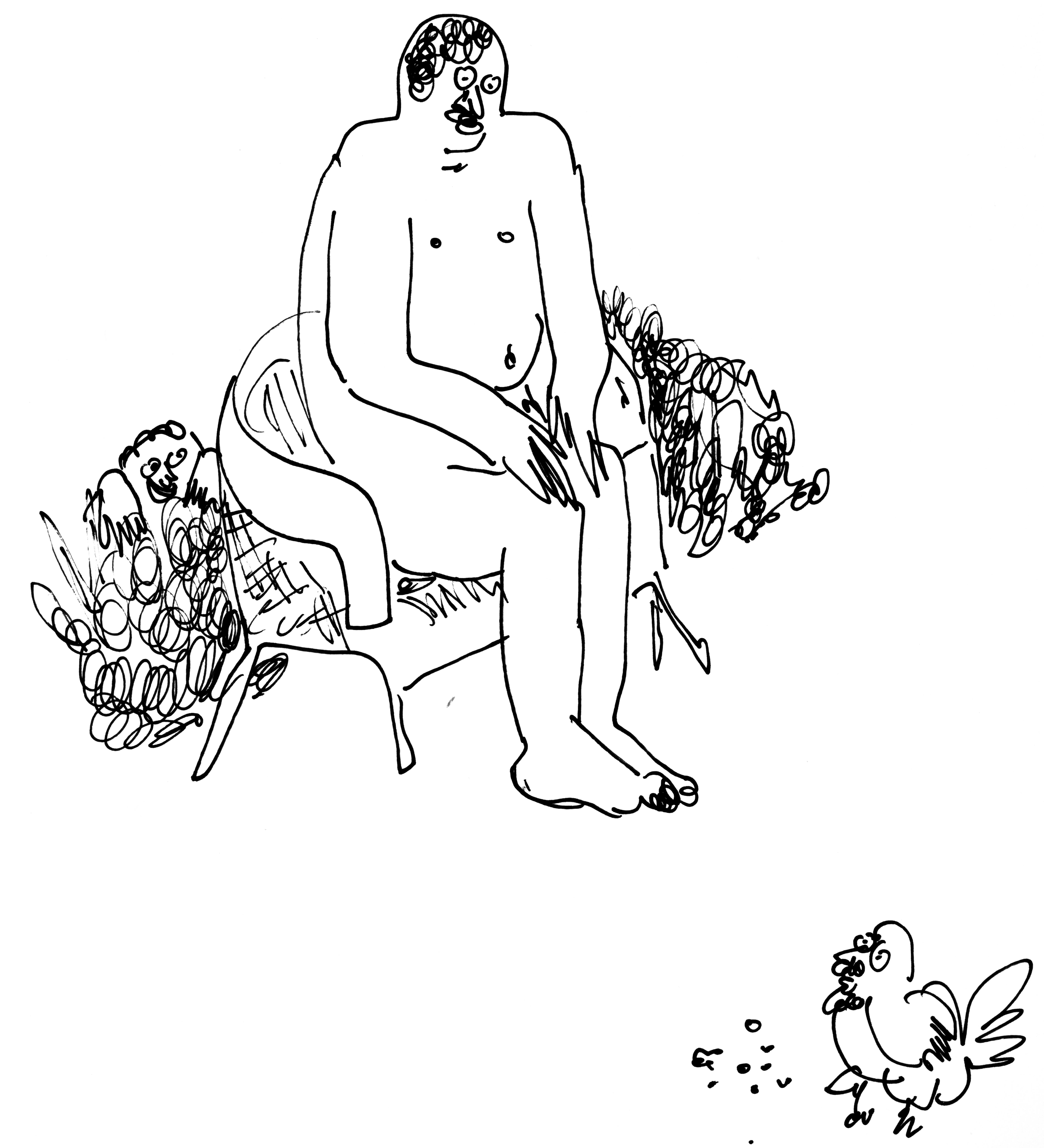
I see your work as taking men from the shadows — unideal bodies of older and larger men, bodies that are shamed from mainstream gay culture — and projecting them larger than life, in full daylight, sometimes as tall as the facades of buildings. You definitely aren’t mocking them, but you aren’t idealizing them on a pedestal. Though the lack of shame is immediate, intimate, humorous, and arresting. Was that public visibility an interest in your decision to do street art?
I don’t think I have ever really identified or felt a real connection to a lot of what mainstream gay culture idealizes, especially when it comes to body imagery, and I think that is reflected in my artwork. To me I think that the body types that I illustrate are beautiful and attractive, and feel like it was something that I did not often see in public spaces even growing up in the bay area. Being able to make these images vibrant and large scale in the public eye was a very empowering thing for me and even helped me overcome some feelings of internalized shame I had.
Well also, not to mention that mainstream gay culture — and fashion in general, which is directed by the white gay man’s eye — is very centered around white bodies. How much do you think being an Asian-American with an Asian body played into feelings of shame and outsiderness?
I think being Asian American has a lot to do with my feelings of being an outsider. When I was younger a lot of the images that I saw from gay mainstream media idealized white men and white bodies and I remember feeling unattractive at an early age. Asian men are already seen as being passive and submissive, and I feel like racial stereotypes are magnified in the gay community. I think white idealization is part of the reason why racism and discrimination is so openly expressed among gay men. It seems common that even men of color are stating their preferences for white only, and no Asians, blacks, or Latinos. Being exposed to white ideals definitely had an impact on me, whether subconsciously or not.

“I think I was able to overcome some of my own anxieties and feelings of shame by illustrating these anonymous scenes and making them publicly visible.”
What were your early experiences like in gay spaces, and did it change as you got older? Physical unattractiveness is something that is taught, and then one has to unlearn it, and I’m interested in your own personal trajectory there, and how that may have led you to the public, and confrontational subject matter you often explore.
Even though I came out after High School, I still had some issues feeling comfortable with my sexuality. For a long time I felt insecure and was somewhat discreet about my sex life, and often had anonymous encounters with strangers online and in bathhouses. I had some self esteem issues for a while, but as I got older I became more open and honest with myself and the people around me. I think I was able to overcome some of my own anxieties and feelings of shame by illustrating these anonymous scenes and making them publicly visible.
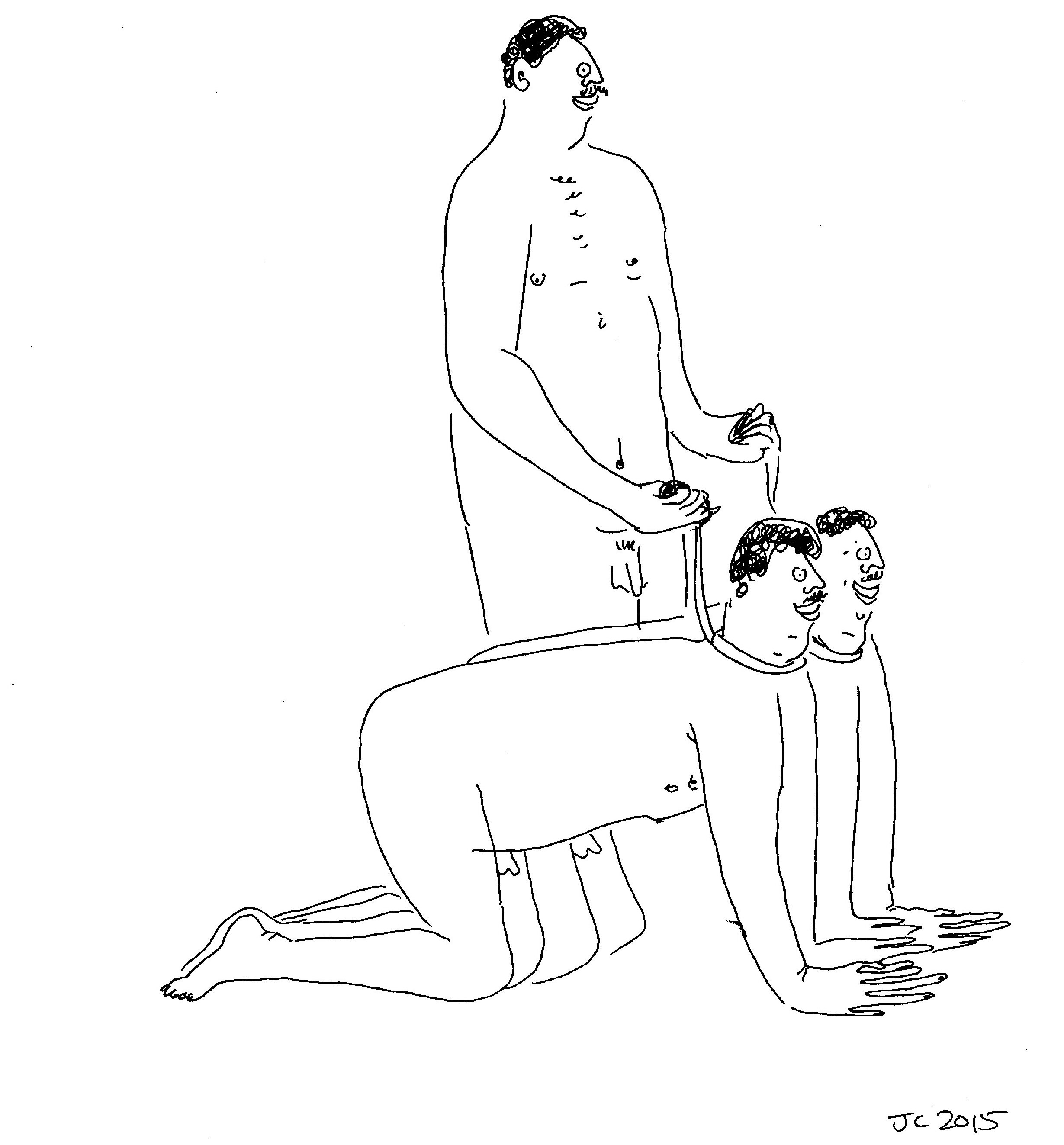
Can you tell me about how you got into zine publishing, and what that experience was like?
Some of my friends who I went to school with started a zine publishing press called Tiny Splendor, and I did a zine with them a few years ago. They are some of the sweetest people in the world and since then they have made quite a name for themselves in the zine scene. That was how I first actually got involved with making zines, but I have been doing most of my recent zines under a project my partner and I started called Unity Press. I really enjoy making zines because they are so accessible and are an easy way for me to share my work with the world. I often hand them to strangers and leave them in public places like bathrooms, laundromats, bookstores, or on bulletin boards. They are not always going to be well received but I like knowing that they are still somewhere out there for someone to see.
Follow Jeffrey on Instagram at @unitypress.
This feature was originally published in Posture’s second print issue, available for purchase in our online shop here.
